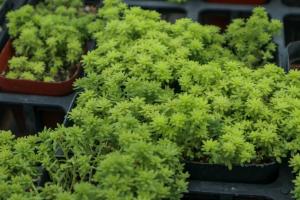How to Plants Transport Water
Water is vital for the survival of plants, as it plays a crucial role in plant growth and development. Without water, plants would wilt and eventually die. However, water is not readily available to plants, and they have to rely on a complex system to transport water from the roots to the leaves. In this article, we will explore how plants transport water and the mechanisms involved.
The Root System
The root system is responsible for absorbing water and nutrients from the soil. The roots are equipped with tiny hairs called root hairs, which increase the surface area of the root and allow for more efficient water absorption. When water enters the root hairs, it moves through the cell walls and enters the cytoplasm of the root cells. From there, it can either move through the cell membranes or enter the xylem tissue.
The Xylem Tissue
The xylem is a type of tissue that is responsible for transporting water and minerals from the roots to the leaves. The xylem consists of two types of cells: tracheids and vessel elements. These cells have a unique structure that allows water to move through them in a continuous stream.
Tracheids are long and thin cells that are found in all vascular plants. They have tapered ends, which overlap with neighboring cells and form a continuous tube. Vessel elements, on the other hand, are wider and shorter than tracheids and are found only in angiosperms. Vessel elements have perforated end walls, which allow water to flow freely between neighboring cells.
The Cohesion-Tension Theory
The cohesion-tension theory explains how water is transported through the xylem tissue. According to this theory, water moves from the roots to the leaves because of the tension created by the transpiration of water through the stomata in the leaves. When water is lost through transpiration, it creates a negative pressure in the leaves, which pulls water up through the xylem tissue. This negative pressure is known as tension.
The cohesion-tension theory also explains how water molecules are able to move through the xylem tissue. Water molecules are cohesive, which means that they are attracted to each other. This creates a continuous stream of water molecules that are able to move through the xylem tissue without breaking apart.
The Role of Stomata
The stomata are small pores found on the leaves of plants, which are responsible for controlling the exchange of gases and water vapor between the plant and the environment. When the stomata open, water vapor is lost through transpiration, which creates the tension needed to pull water up through the xylem tissue. When the stomata close, transpiration is reduced, and water loss is minimized.
In conclusion, plants have a complex system for transporting water from the roots to the leaves. The root system absorbs water from the soil, which is then transported to the leaves through the xylem tissue. The cohesion-tension theory explains how water is able to move through the xylem tissue, while the role of stomata is to control the exchange of gases and water vapor in the leaves. Understanding how plants transport water is essential for the successful cultivation of crops and the preservation of natural ecosystems.

 how many times do yo...
how many times do yo... how many planted tre...
how many planted tre... how many pine trees ...
how many pine trees ... how many pecan trees...
how many pecan trees... how many plants comp...
how many plants comp... how many plants can ...
how many plants can ... how many plants and ...
how many plants and ... how many pepper plan...
how many pepper plan...































